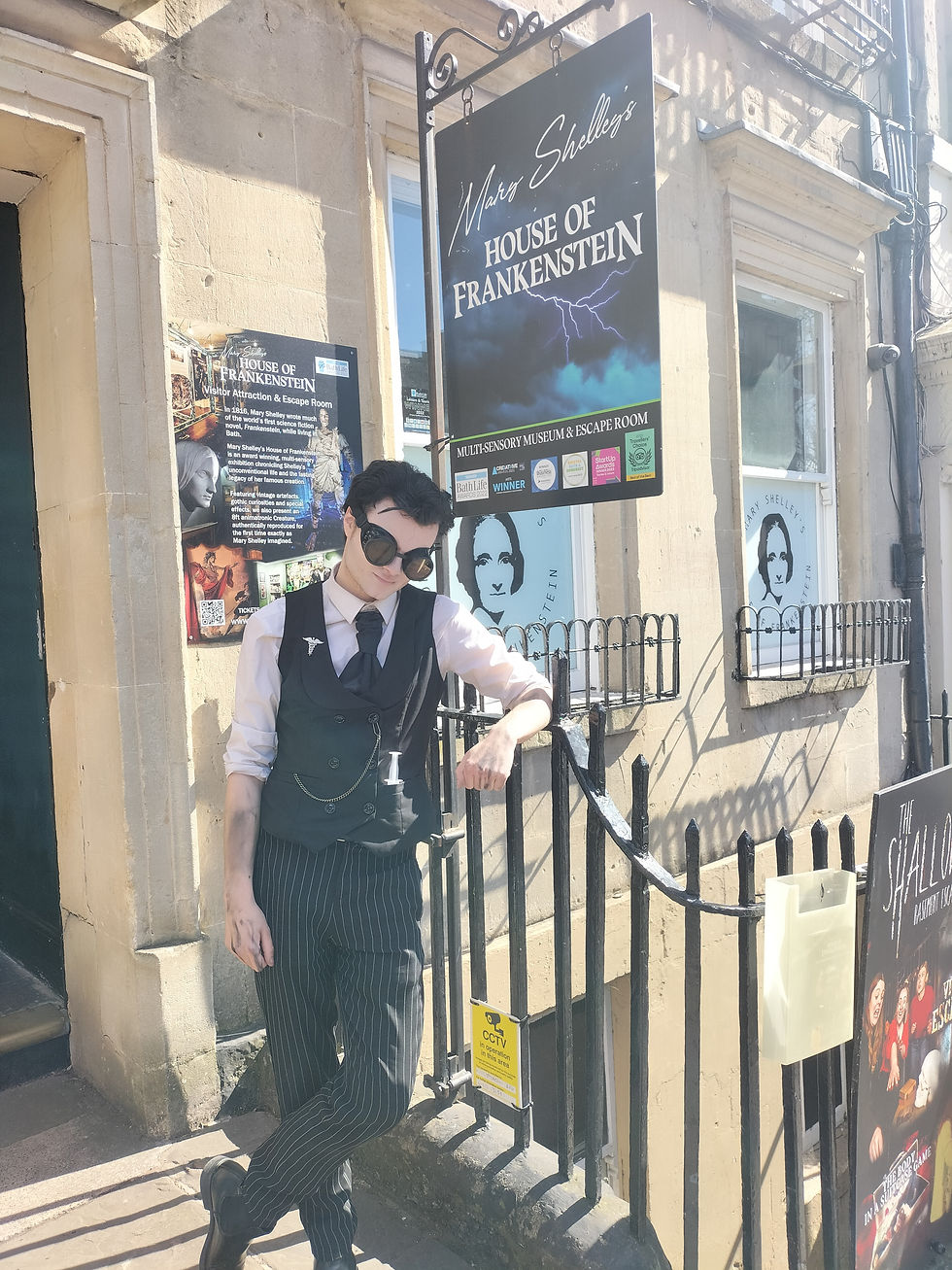Mary Shelley in Bath: Birthplace of Frankenstein
- Ellen Cheshire
- 19 minutes ago
- 2 min read

With Guillermo del Toro’s Frankenstein in cinemas now, ahead of its Netflix release, it seemed like a good time to write up my visit earlier this year to Bath, seeking out locations with a Mary Shelley connection. There aren’t as many as for Jane Austen, but they’re worth the search. I whiled away hours in the fascinating Mary Shelley’s House of Frankenstein, which brings the novel’s enduring visual power and legacy vividly to life.
Mary Shelley spent a pivotal period in Bath between September 1816 and May 1817. At just 19, she lived at 5 Abbey Churchyard, near Bath Abbey and the Pump Room, where she worked on Frankenstein. This period followed the tragic death of her half-sister, Fanny Imlay, whose loss deeply influenced the novel’s themes of isolation and creation.



Earlier that summer, Mary had been at the Villa Diodati near Lake Geneva with her husband-to-be Percy Bysshe Shelley, Lord Byron, her stepsister Claire Clairmont, and Byron’s physician John William Polidori. The group challenged each other to write ghost stories, and Mary’s contribution - a tale exploring the possibility of reanimating a corpse- became the seed of Frankenstein. These early months have been dramatised in films such as Gothic (1986), Haunted Summer (1988) and Rowing with the Wind (1988).

Less explored is her time in Bath, where she continued developing the novel amid grief and domestic upheaval. Manderley Press's 2024 book Mary Shelley in Bath by Mary Shelley, with an introduction by Fiona Sampson, and illustrations by Eleanor Macnair, delves into these months, exploring her reading, writing routine and personal life during this formative period.
Bath honours her legacy with the world’s first museum dedicated to Mary Shelley. Mary Shelley’s House of Frankenstein, at 37 Gay Street, offers an immersive, multi-sensory experience.

Visitors can explore her life, the origins of Frankenstein, and interact with exhibits including this striking Monster statue created by a film VFX company, Millennium FX, drawing on the novel's descriptions.
Bath’s literary history, combined with its connection to Mary Shelley, makes it a compelling destination for anyone interested in Gothic fiction and the enduring influence of Frankenstein. You can read more about Mary Shelley’s Frankenstein in my blog Mary Shelley and the Birth of Gothic, and in my my essay for the BFI release of Ken Russell’s Gothic.
Bucket list item checked!



Comments